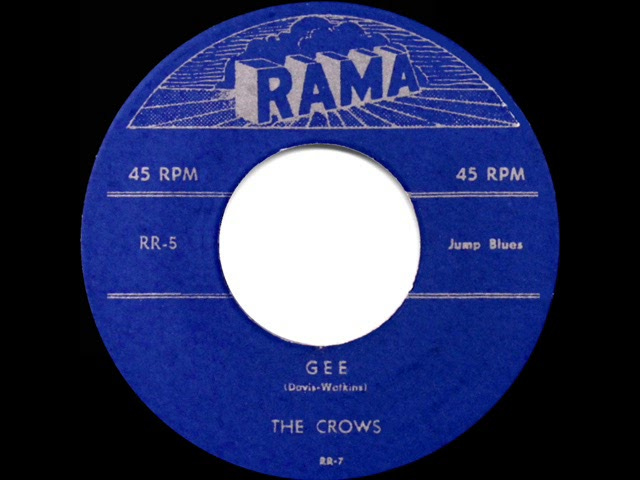Lest you should get the impression that rock and roll evolved entirely out of Southern musical traditions, the Crows should dispel this misconception. As blues, boogie, and country were emerging from the juke-joints, backwoods and front porches on the South, street-corner vocal harmonies colored Northern cityscapes. The melodic scatting and four-part harmonies of doo-wop, the basic ingredients to the rock and roll lyrical recipe, were born on the streets of cities like New York, Detroit, and Philadelphia.
The Crows were amateur Harlem sidewalk singers when they won an Apollo Theater talent show and earned a contract with a tiny start-up label called Rama. In 1953, they recorded a small clutch of songs in their familiar doo-wop style, but with the backing of an electric jump blues band. The group actually wrote “Gee” in a matter of minutes during the session, rendering the very first original doo-wop song to become a crossover hit.
Over the course of its first year, the record actually did very little, slowly climbing local playlists in Philly and New York. It wasn’t until 1954 that it began to pick up national steam, eventually topping out at #2 on the R&B charts and lurching all the way to the #14 spot on the Pop charts.
This, in essence, makes “Gee” the very first original hit by a true rock and roll group. Such is to say that The Crows were not interlopers from a jazz background. They weren’t crack studio aces assembled by a savvy music businessman. They were young, amateur musicians recording on an independent label without pretension.
“Gee” is a decidedly innocent recording on its surface, evoking an idyllic “aww shucks” take on the 1950s that almost obscures the profound enormity of its impact. The Crows saw little chart success after “Gee,” but theirs was the first trickle in a coming flood of crossover doo-wop hits and rock and roll vocal combos.
See the full list of 50 Songs that Gave Birth to Rock and Roll





Rama owner George Goldner was so thankful for the success of the record that he started the Gee label as a tribute to it. The most famous artists on the label were Frankie Lymon and The Teenagers.